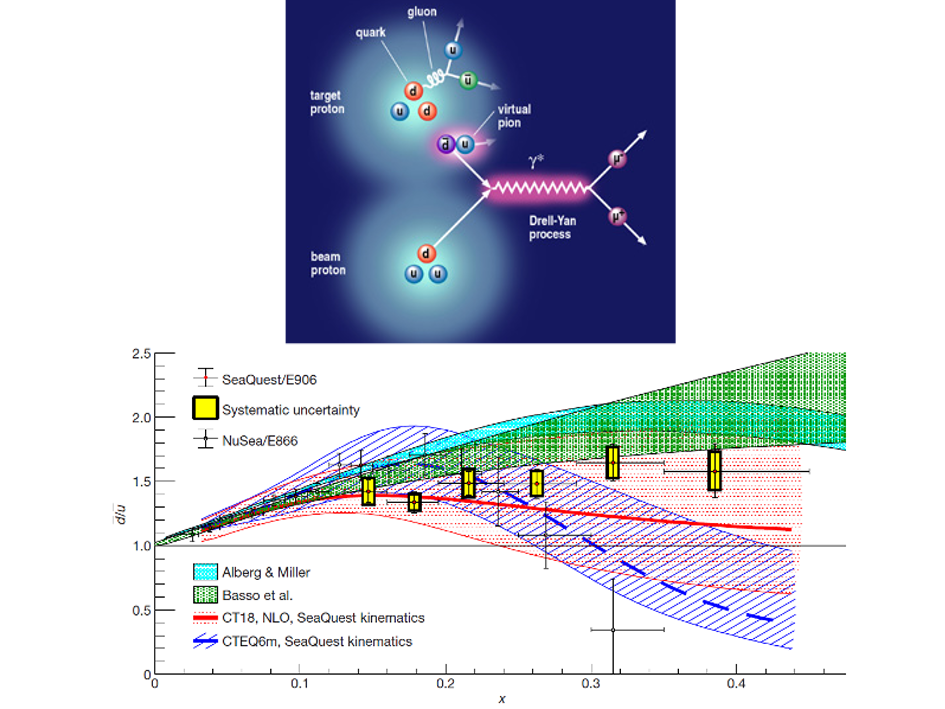Exploring antiquark asymmetry in the proton
Wen-Chen Chang, Andrew Yen-Chu Chen, Kei Nagai, Da-Shung Su and Su-Yin Grass Wang
Institute of Physics, Academia Sinica
Nature 590, 561–565 (2021)
Protons and neutrons, the components of every nucleus, are the dominating mass carriers of our visible universe. Our understanding of protons/neutrons has been evolving from a simple 3-quark structure to the 1d longitudinal momentum fraction (x) distributions of quark/gluon and the multi-dimensional distributions with additional dependency on transverse size or transverse momentum.
Inside them, there is existence of anti-quarks, originated from the splitting of gluous, the strong force carrier. Utilizing the Drell-Yan process, NuSea/E866 experiment identified a large asymmetry of anti-d and anti-u asymmetry over the range of x=0.02-0.35, with an intriguing signal of a turning over at large x. Nevertheless, this turning-over trend is puzzling since it is not compatible with the pion-cloud picture which accounts for the observed large antiquark asymmetry.
Starting from 2008, a joint Taiwan team formed by Academia Sinica and NKNU groups, worked on Fermilab SeaQuest/E906 experiment whose measuring capability was on the large-x region. The results of large-x antiquark asymmetry are published in Nature 590, 561 (2021) https://www.nature.com/articles/s41586-021-03282-z, along with a commentary at https://www.nature.com/articles/d41586-021-00430-3. Our accurate results clearly show that these distributions of antiquarks are considerably different, with more abundant anti-d than anti-u over a wide range of x, up to 0.45. The measurements are important for studies at the Large Hadron Collider at CERN in establishing the standard model baseline for the search of new physics. The Academia Sinica group make significant contributions to these results, especially on the aspects of data analysis and construction of all digital-signal collection modules.
